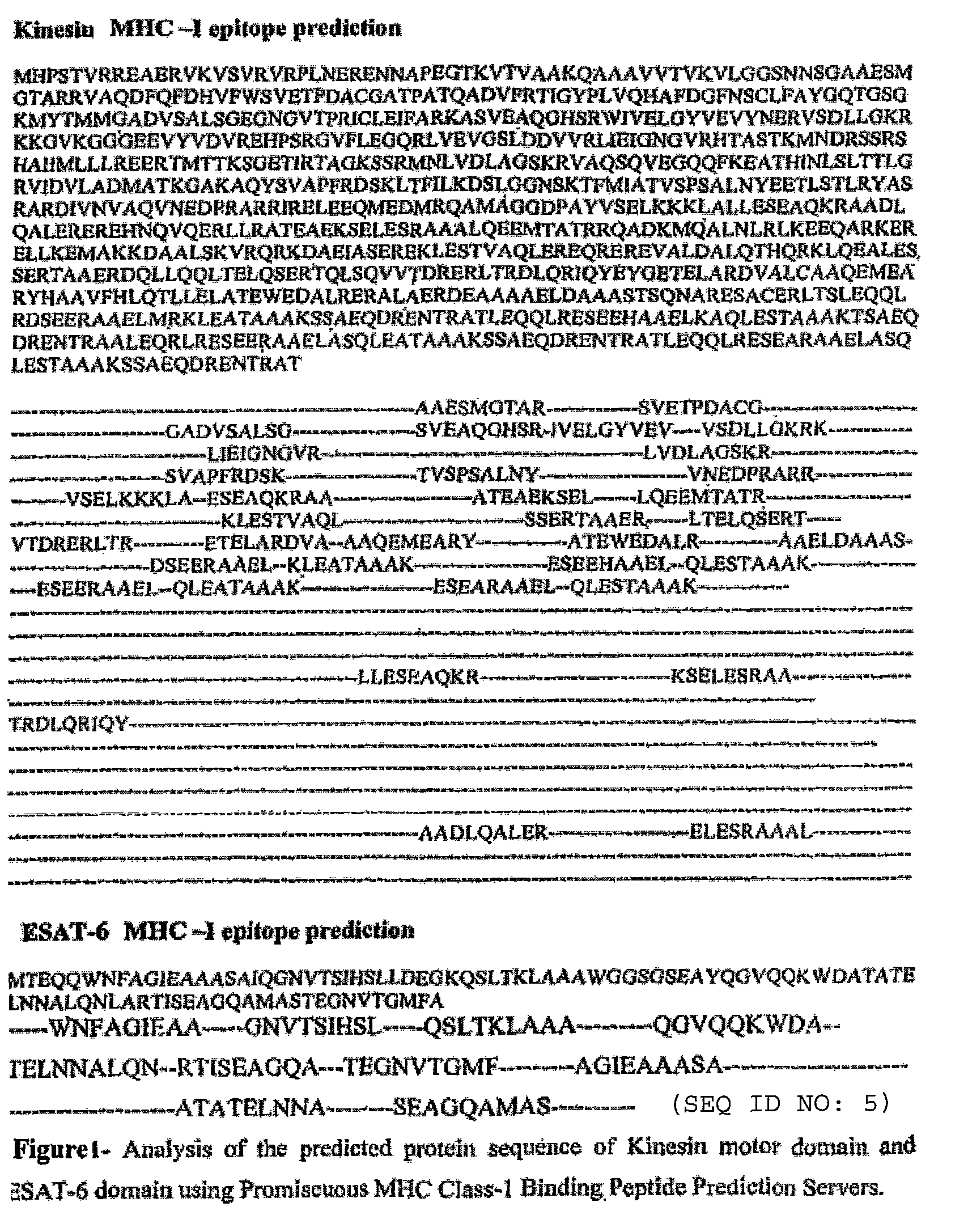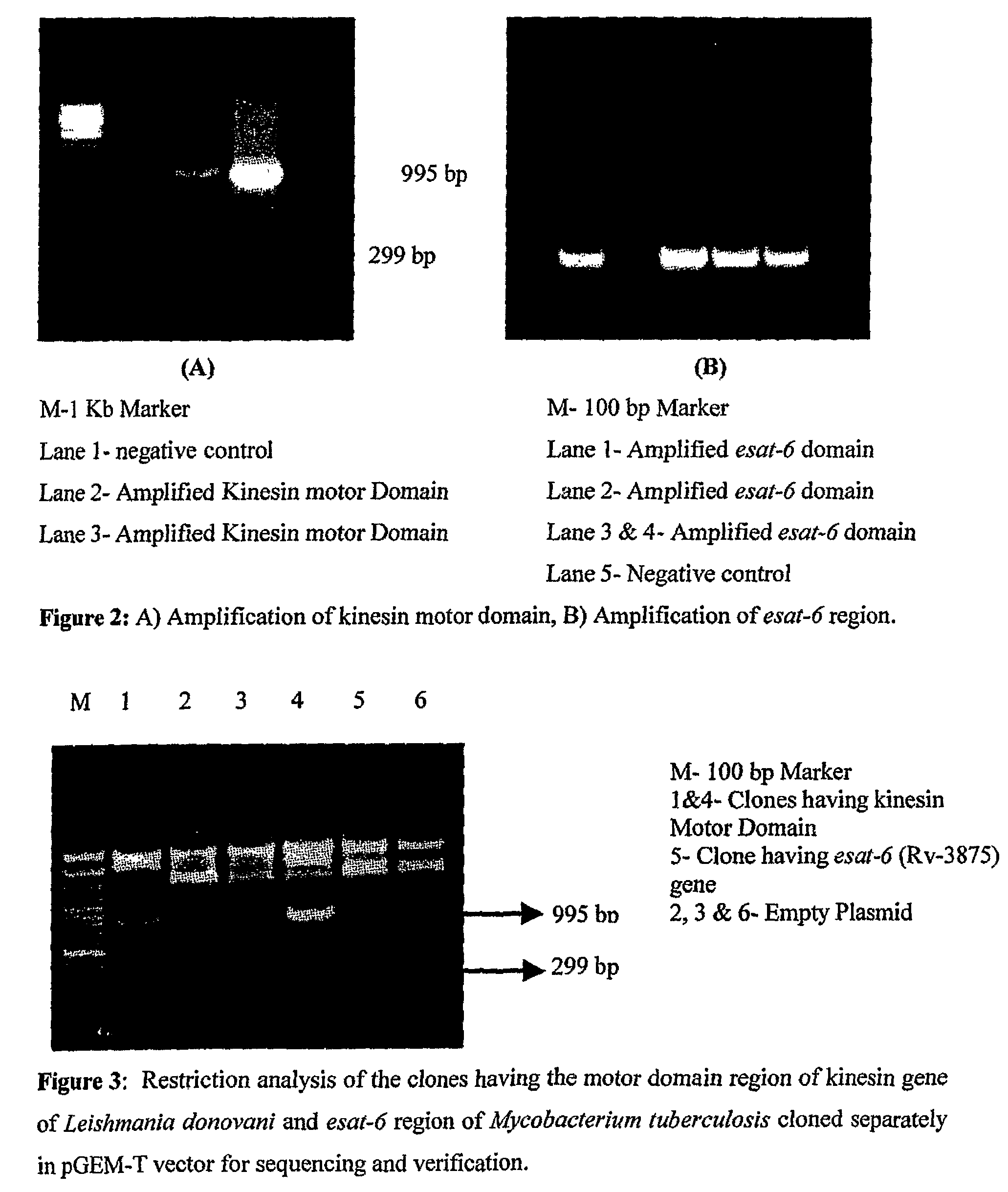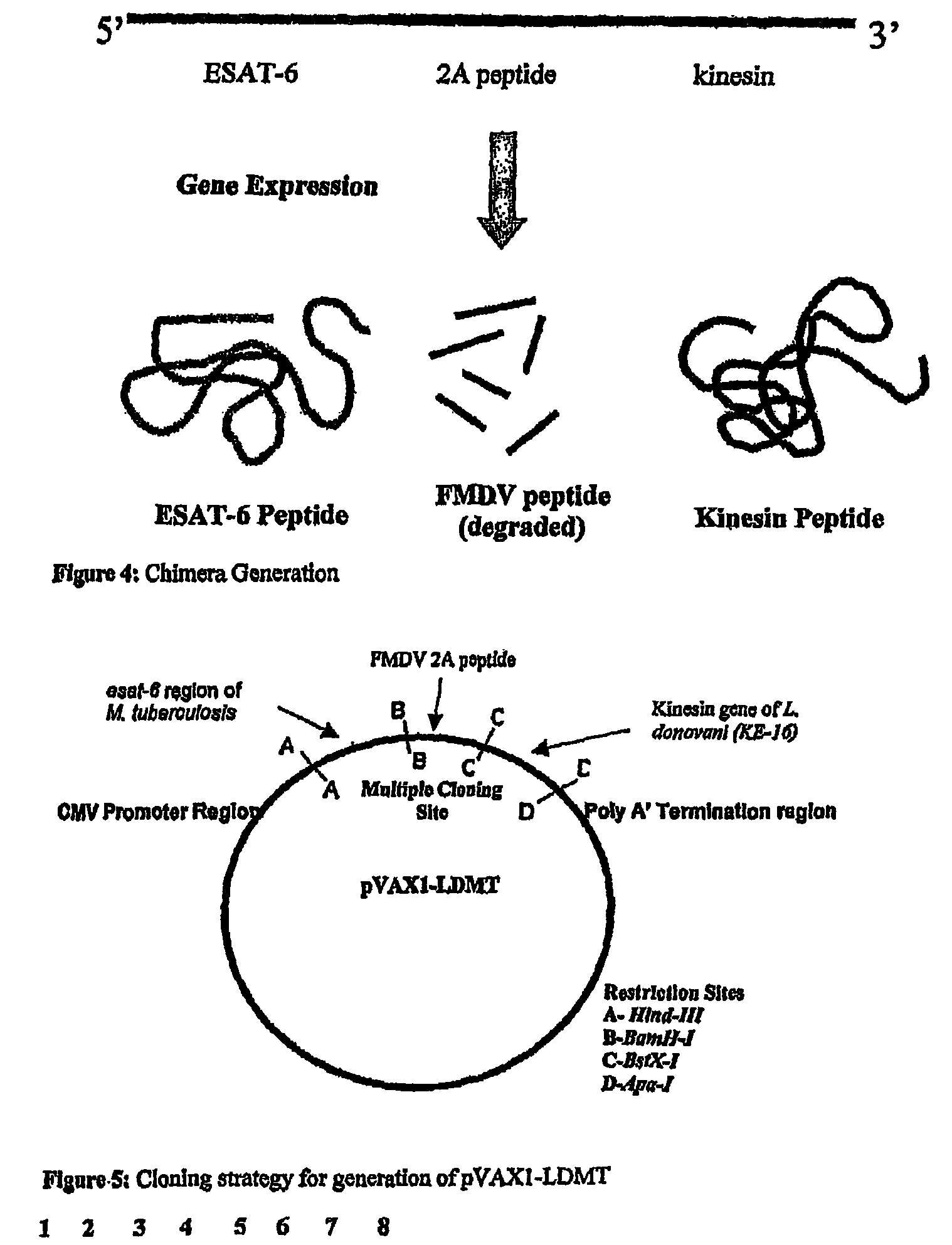Constructing a DNA chimera for vaccine development against leishmaniasis and tuberculosis
a chimera and dna technology, applied in the field of new chimeric dna vaccine constructs, can solve the problems of short protective immunity, low antigenecity of vaccines, and limitations of vaccines
- Summary
- Abstract
- Description
- Claims
- Application Information
AI Technical Summary
Problems solved by technology
Method used
Image
Examples
example 1
Selection of Genes for Development of Chimeric Construct
[0090]In the process of development of a chimeric vaccine construct the first step involves the isolation of genes. Three gene regions were selected for preparation of this construct. This includes the esat-6 gene of Mycobacterium tuberculosis, Kinesin motor domain region of Leishmania donovani, and Foot and Mouth Disease Virus 2A peptide gene sequence.
[0091]The ESAT-6 antigen coded by esat-6 gene is one of the major secreted proteins found in M. tuberculosis culture filtrates and is a dominant target for cell-mediated immunity in the early phases of infection in TB patients and in various animal models. The esat-6 gene of Mycobacterium tuberculosis belongs to esat-6 multigene family and has five copies of a cluster of five copies of a cluster of esat-6 loci. These clusters contain members of the CFP-10 (1 hp) and ESAT-6 (esat-6) gene families (encoding secreted T-cell antigens) as well as genes encoding secreted, cell-wall-ass...
example 2
Primer Designing for Isolating of Kinesin Motor Domain and esat-6 Gene
[0096]The primers capable of amplifying the coding regions of Kinesin motor domain and esat-6 genes have been developed. The primers are designed in such a way that they include restriction sites also for there efficient cloning in specific vector. The sequences of the primers for amplification of kinesin motor domain are mentioned in SEQ ID No. 6 and 7. Similarly the sequences of primers for amplification of esat-6 region are mentioned in SEQ ID No. 8 and 9.
[0097]Following there amplification using Pfu DNA polymerase they are cloned in pGEM-T vector, purified and analysed using automated sequencer (FIG. 3). Finally they are joined together on two sides of self cleaving peptide (2A peptide of FMDV) using specific adapter sequences with restriction sites, thus allowing individual expression of both genes from chimeric molecule. The details of synthesis of FMDV 2A peptide is mentioned below.
example 3
Synthesis of FMDV 2A Peptide
[0098]For above mentioned purpose, FMDV sequences having more than 90% percent cleavage activity were selected on the basis of database search. Finally on the basis of there length and restriction map for cloning in vector, 58 bp sequence with 97% cleavage activity was artificially synthesized from microsynth, Switzerland. The sequence of the gene was mentioned in SEC) ID No. 3.
PUM
| Property | Measurement | Unit |
|---|---|---|
| pH | aaaaa | aaaaa |
| volume | aaaaa | aaaaa |
| volume | aaaaa | aaaaa |
Abstract
Description
Claims
Application Information
 Login to View More
Login to View More - R&D
- Intellectual Property
- Life Sciences
- Materials
- Tech Scout
- Unparalleled Data Quality
- Higher Quality Content
- 60% Fewer Hallucinations
Browse by: Latest US Patents, China's latest patents, Technical Efficacy Thesaurus, Application Domain, Technology Topic, Popular Technical Reports.
© 2025 PatSnap. All rights reserved.Legal|Privacy policy|Modern Slavery Act Transparency Statement|Sitemap|About US| Contact US: help@patsnap.com



